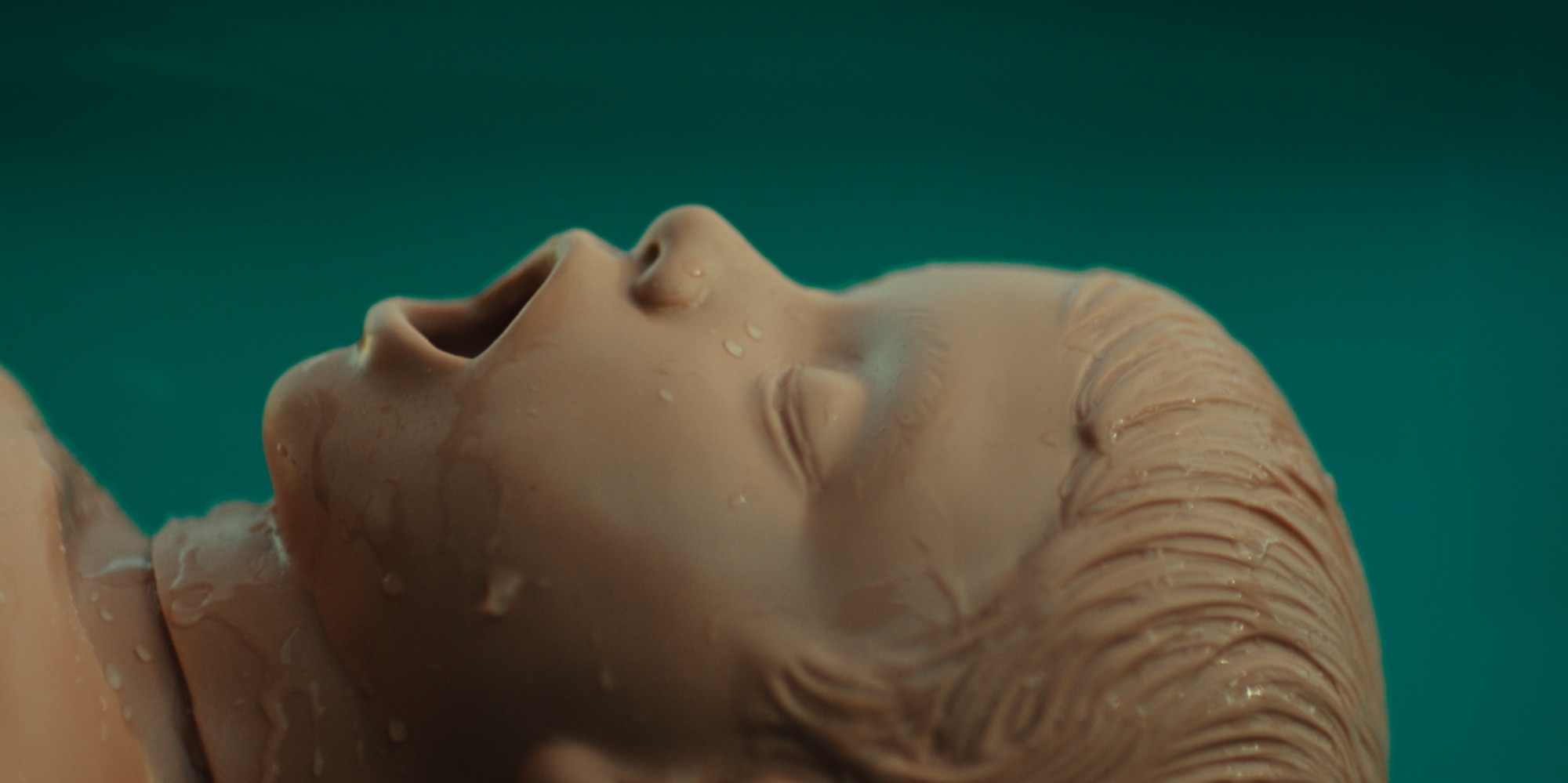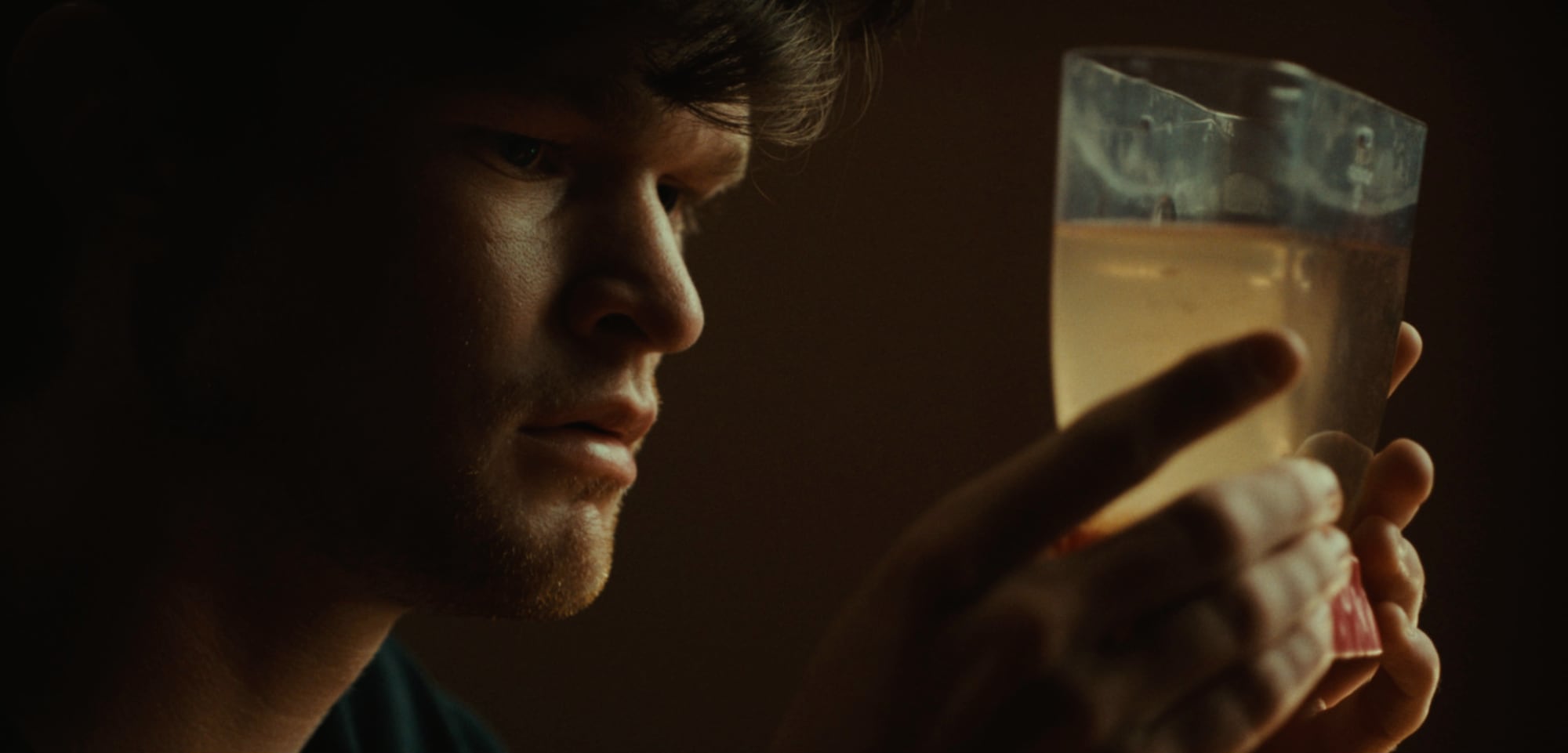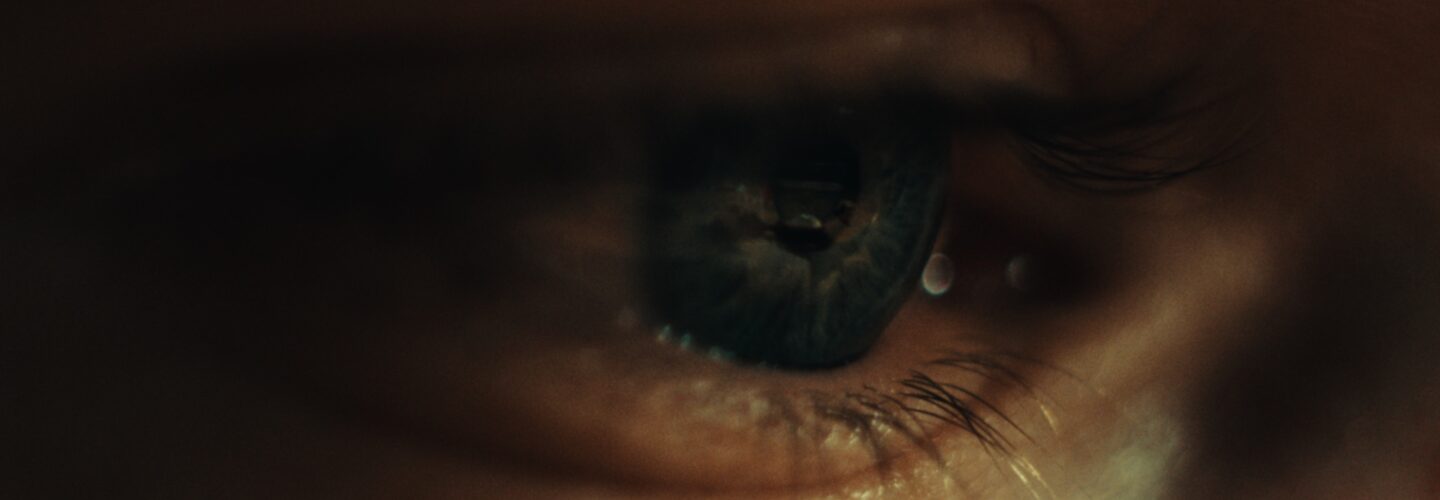
Director Nathan Ginter’s intense short drama Last Seen is a compelling look at a young man’s mental descent in the wake of his sister’s disappearance. Narratively, Ginter’s story doesn’t fit into your archetypal narrative structure, instead, he opts for a more slice-of-life approach, showing us the progression of the main character Devon’s psychological fracturing from the off as he struggles to function within his mundane routine. This natural approach to plot is juxtaposed with an intense visual stylisation, as we see the story play out through a series of beautifully composed heavy close ups that artistically emulate Devon’s cerebral state. DN is delighted to premiere Ginter’s tale of turmoil on our pages today in conjunction with an interview where he opens up on his precise and considered cinematic approach, his obsession with brine shrimp, and the frantic last minute nature of the shoot.
Where did this story of a brother facing a mental decline in the wake of his sister going missing originate for you?
For a long time, I’ve been fascinated with brine shrimp (Sea Monkeys). I was struck by the strangeness of treating a living creature as a toy, and the control/lack of control that comes with that, combined with their inherently unsettling marketing and history. The idea for Last Seen emerged after making the connection of how these seemingly innocuous pets could be linked to a missing family member and serve as a double-edged sword for the main character.
We boarded the film carefully to lock in a visual language as well as best utilize our limited resources for what exactly we needed in each frame.
Speaking of the main character Devon, how did you look to visually portray his psychological turmoil?
Devon’s various consumptions throughout the film became a main focus, and the media he’s taking in felt like a crucial element of that, which led to my Production Designer Aidan Flynn and I working in pre-production to create the ‘Ocean Critters Handbook’.

You shoot Devon intensely too, as we see him mostly through close ups. What provoked that creative choice?
The film was shot on the Alexa Mini with Super Speed lenses. My Cinematographer Shane Bagwell and I discussed the heavy use of closeups to create a claustrophobic character subjectivity while also giving a sense of dissociation. Early in the process, we boarded the film carefully to lock in a visual language as well as best utilize our limited resources for what exactly we needed in each frame.
How smoothly did production run for you? And how did that heavily curated visual stylisation manifest during the shoot?
There were several different iterations of the film, but it finally came together fairly last minute as a school project during the pandemic. We were still casting and location scouting the day before our shoot, so we had to be pretty quick on our feet to pull it all together. The film was shot very specifically for the edit, so it didn’t change much from the original boards, but fine-tuning the pace and sonic spaces of the film became super crucial in post.


Another element of Last Seen I thought was really interesting narratively was your decision to keep it somewhat open-ended. It feels like we are just seeing a snippet of Devon’s life. Why did you choose to not definitively conclude his story?
With Last Seen, I hoped to make a short that would work as a ‘fast-paced-slow-burn’, building our sense of the character’s emotional state and experience through disorientating narrative fragments. There is difficulty in communication and connection faced by the characters, and it seemed the film should also be infected by that same silence and isolation. Last Seen takes itself a little more seriously than my other shorts, and for me, there’s a catharsis in fully embracing that dread without needing to artificially resolve the questions posed through plot within the film’s runtime.
There is difficulty in communication and connection faced by the characters and it seemed the film should also be infected by that same silence and isolation.

From watching your other shorts it’s clear that you’re interested in stories centred around the darker side of humanity, what keeps you coming back to that as an overarching theme?
One of the things I love about cinema is that it’s a safe space to dive into darker aspects of life, wrestle with or confront themes, others’ ideologies, or parts of ourselves, and re-emerge on the other side. I find it really cathartic to have that shared emotional experience with others, and I think the corners of humanity that are hard to face are the most interesting and valuable to explore.
So much of Chris Jensen’s performance is based around what he has going on internally, how did you work with him to express that inner turmoil on screen?
I was super lucky to get to work with Chris on the film. We didn’t have any rehearsal time, so we mostly discussed the tangible aspects of what’s going on that led up to these moments and the levels with which Devon is trying to suppress his emotions in each scene. All the credit goes to Chris for diving right into it and being able to express so much while maintaining that restraint.

What did you learning making Last Seen that you’ll take into your next film?
I learned to seek out and trust those who share your vision for a project and not get too caught up in feedback that doesn’t apply to the film you’re trying to make.
Speaking of, what are you working on next?
I have another short film The Businessman currently on the festival circuit, am completing post-production on my thesis film, The Third Ear, and am finishing up a new feature script.


